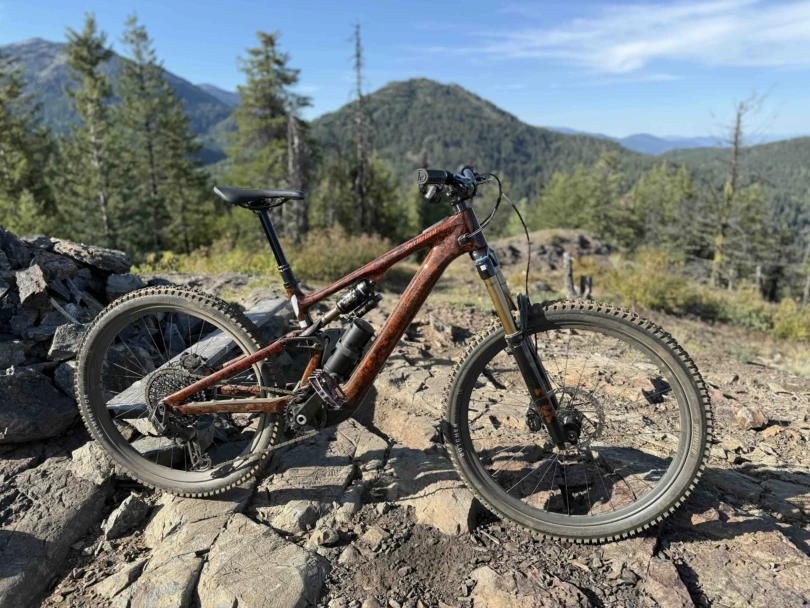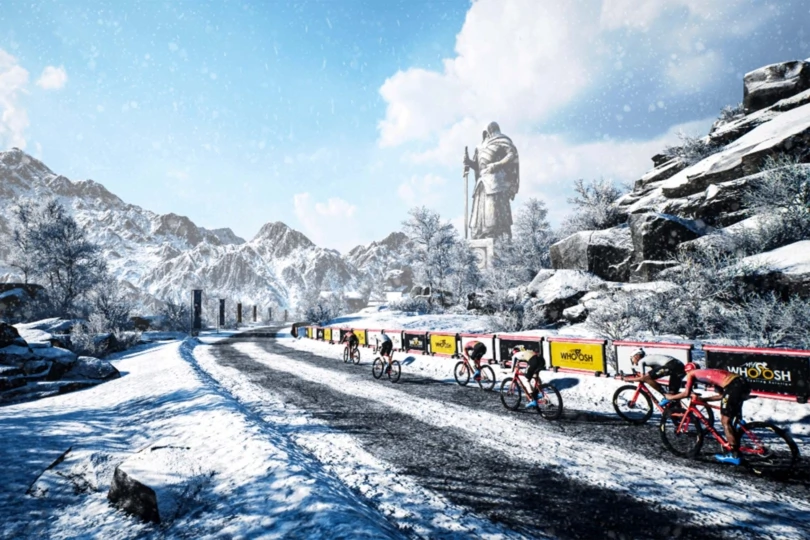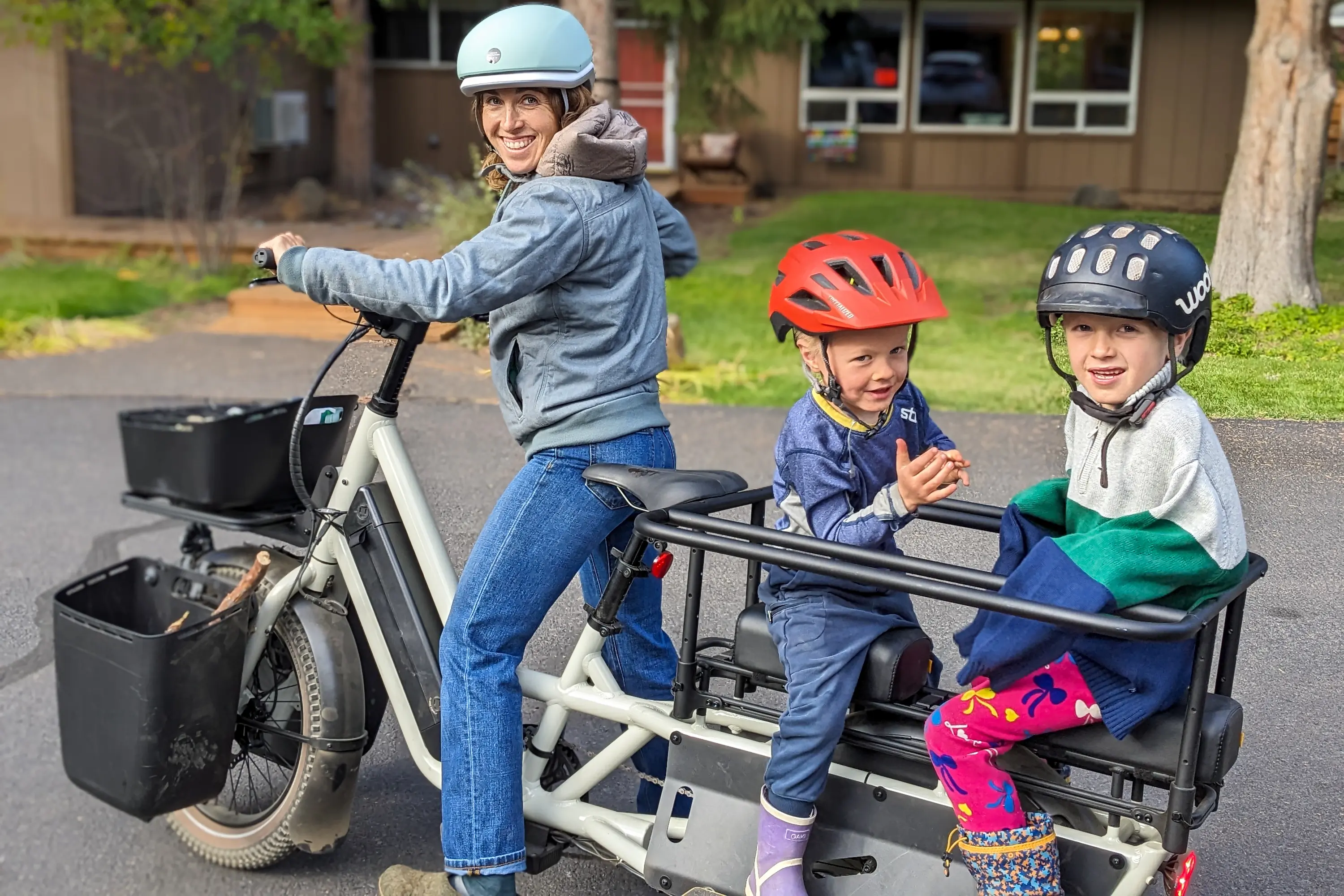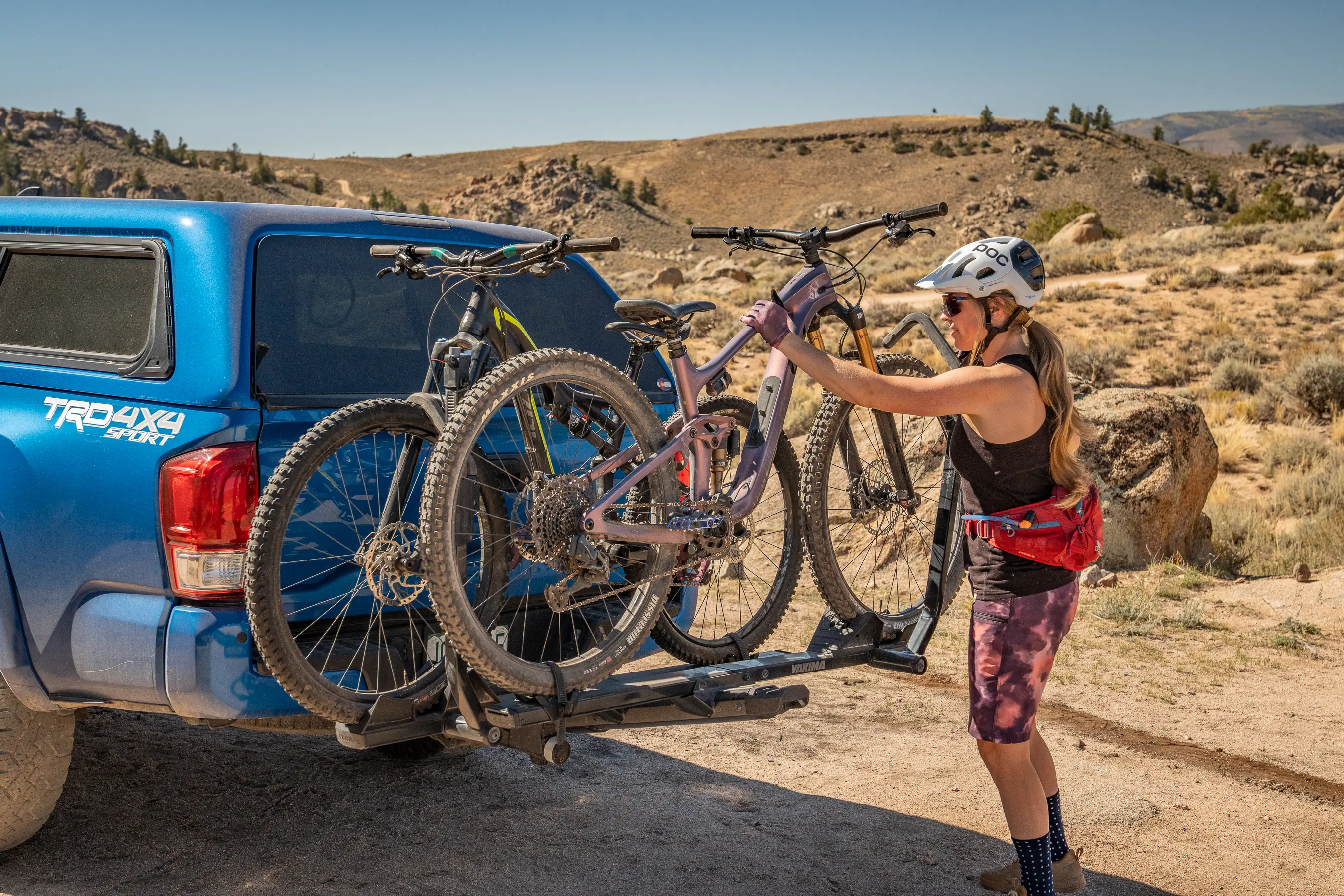Across sports and disciplines, helmets are specifically designed to protect their users from impacts related to their intended use.
There are regulatory bodies around the world that have developed standards by which helmet manufacturers must abide in order to include a stamp of approval that lets buyers know they are up to snuff.
The standard in the U.S. is the Consumer Product Safety Commission (CPSC) certification. Others include certifications like ASTM, Snell, or ANSI, along with the European EN 1078 and 1080, all of which come with their own standards for certification.

But even with these certifications, it’s evident that some helmets perform better than others. But how would a consumer know?
Researchers at Virginia Tech are working to settle that question once and for all. Now, in addition to CPSC certifications, or things like MIPS stickers on helmets marking their safety standards and technology, many are advertised as having four- or five-star ratings from the Virginia Tech Helmet Ratings system. So, what is it?
Virginia Tech Helmet Ratings
The Virginia Tech Helmet Ratings system began around 15 years ago to help reduce concussions in football. It has since expanded to cycling, snow sports, whitewater, equestrian, and soccer, with more sports on the way.
Barry Miller, director of outreach and business development for the Virginia Tech Helmet Lab, said helmet certifications like the CPSC standard in the U.S. operate on a pass-or-fail model that doesn’t really account for important factors contributing to reducing head injuries or concussions.

“The threshold for passing is catastrophic head injury. So this is where skull fracture and death occur. So those are really important, right?” Miller said. “When you wear a helmet for a given purpose that has a certification of some sort on there, what it means is by wearing this helmet, I shouldn’t get a skull fracture or die, whether it’s football or a hard hat, etc.”
The Virginia Tech Helmet Ratings system adds to the standards with a broad regimen of sport-specific impact testing. This better informs people of how their helmet will fair in a fall, crash, or impact they could expect to experience in their sport even if it doesn’t reach the “catastrophic” threshold of most certifications.
Each helmet gets a Summation of Tests for the Analysis of Risk score, more simply called a STAR score, which eventually rates the helmets on a scale of one to five stars.
The big takeaway from the rating system is that it represents the percentage at which a given helmet may reduce the risk of a concussion. According to Virginia Tech’s STAR Methodology for Bicycle Helmets, written in 2018 by Megan Bland, Craig McNally, and Steven Rowson, a helmet with one star would likely reduce concussions by less than 40%. A two-star helmet would yield a 40% to 50% reaction in concussions. A three-star helmet would reduce concussions by 50% to 60%. A four-star helmet would reduce concussions by 60% to 70%, and a five-star helmet would cut concussions by more than 70%.
Testing for Cycling Helmets
Since Virginia Tech uses sport-specific testing for each helmet, there are different categories of tests for different sports.
Cycling helmets include 24 laboratory tests in which a helmet is placed in a drop tower and smashed into a surface to mimic both impact point, or “helmet-to-ground characteristics,” along with linear rotation and rotational velocity, both of which contribute to concussions.
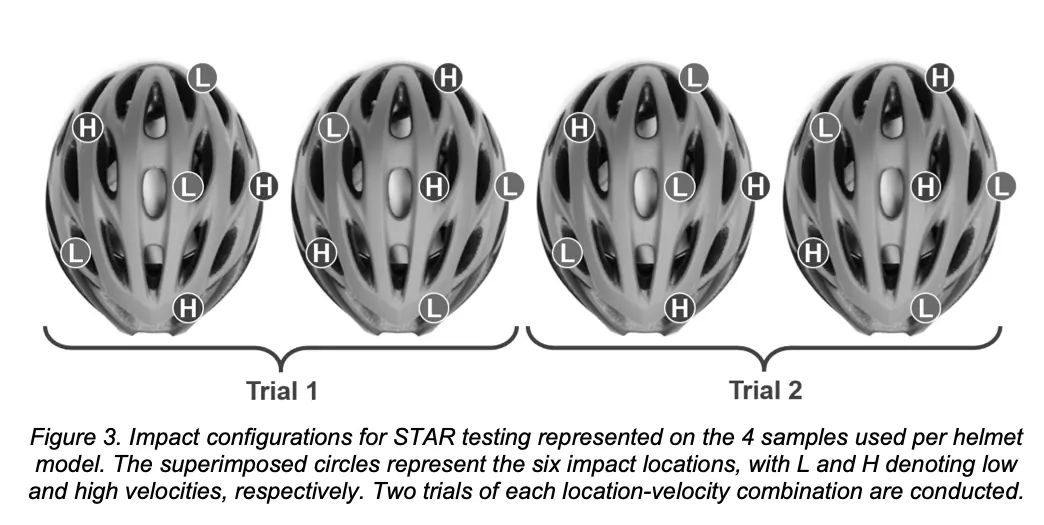



Researchers also look at six specific locations on each helmet for impacts at a high and medium force that closely mirror the forces of impact at speeds cyclists are likely to experience.
“We go to that particular sporting environment, whatever it is, and we figure out and quantify how people hit their heads: what location, what velocity, what angles, etc.,” Miller said. “Then we come back to the lab, and we try to replicate those with one of our various test rigs, and then we’ll create a rating system.”
Building Better Helmets
Virginia Tech’s Helmet Lab is not a one-way street. Researchers give ratings and help manufacturers improve designs to increase safety for their customers.
“It’s kind of a win, win, win for everyone because these pass-fail thresholds don’t include rotational acceleration or velocity into consideration. And we know that’s a part of concussion risk: both the linear and rotational movements of your head,” Miller said. “And so, by designing a STAR equation for that given sport, it gives the manufacturers a design tool to improve the helmets.”
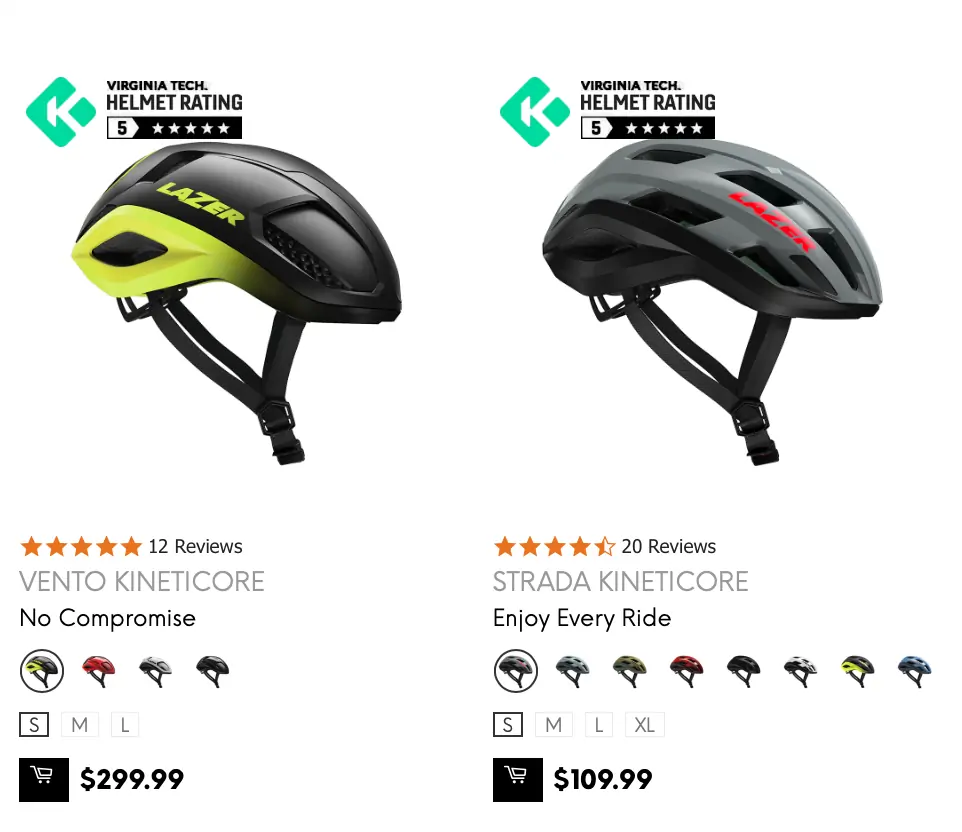



Miller said he has seen that type of growth in multiple sports since the rating system launched. In football, for example, it’s difficult to find a helmet that doesn’t have a five-star rating. Likewise, cycling helmets have improved so drastically that researchers are preparing to re-scale the grading system to better capture the latest safety metrics.
“All the industries, after they get ratings, they come to us with prototypes and figure out, ‘oh, you know, we can improve this helmet.’ And so we work with all the companies and all the sports we cover, and helmets continue to improve,” Miller said.
Which Models Have the Best Virginia Tech Helmet Ratings?
The Virginia Tech Helmet Ratings website ranks 184 cycling helmets and includes each one’s cost to help consumers easily see which are the safest and most affordable. They also included a feature to sort helmets by road, mountain bike, urban and multi-sport helmets to make it easier to compare models.
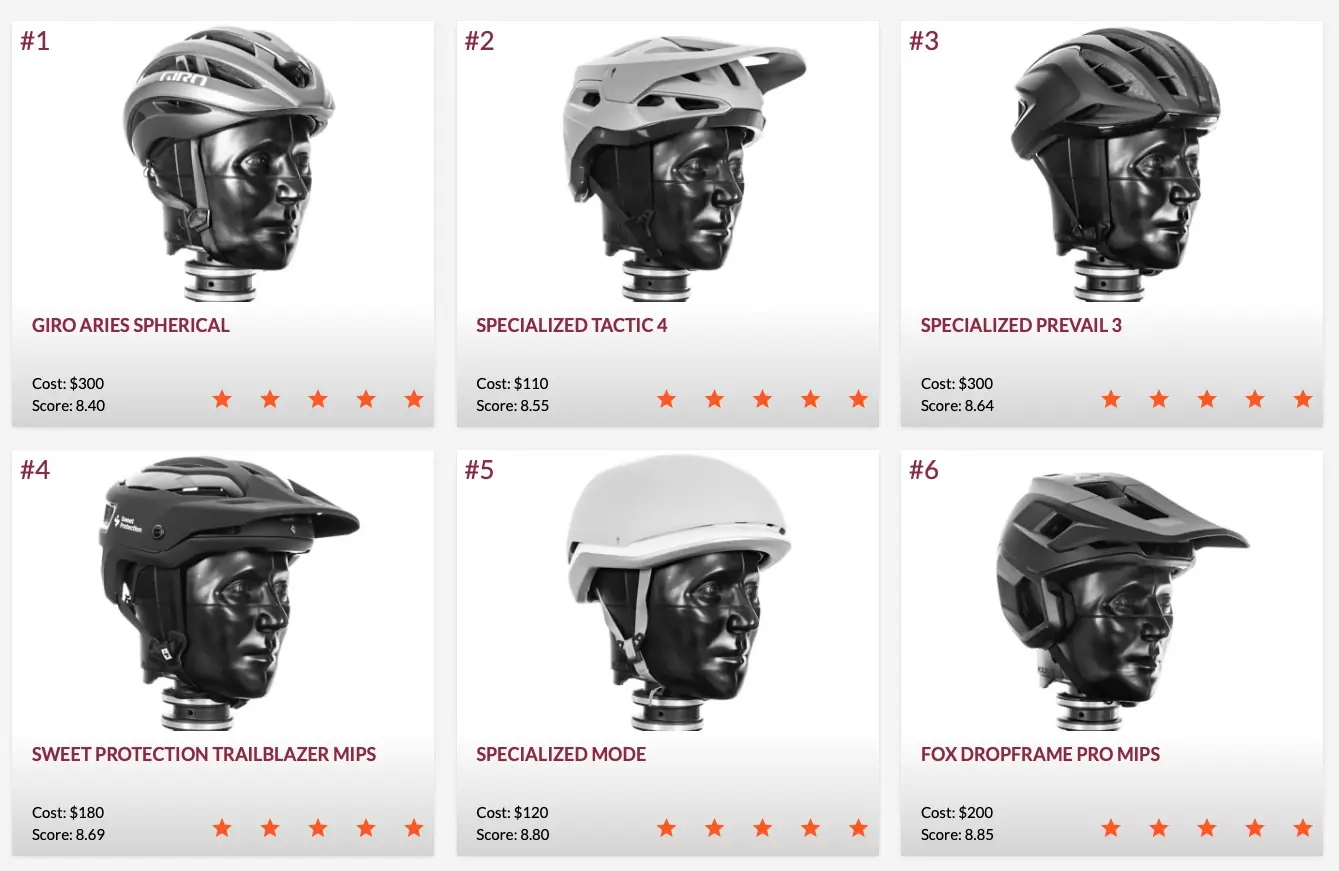



The top helmet on the list for 2023 is the Giro Aries Spherical, which goes for an MSRP of $300. The Specialized Tactic 4, which goes for an MSRP of $120, took second place. The Specialized Prevail 3, which costs an MSRP of $300, came in third. Sweet Protection’s Trailblazer MIPS, which sells for an MSRP of $180, ranked fourth. The Specialized Mode, the third of the brand’s products in the top five, came in fifth. It goes for an MSRP of $120.
The rest of the top 10 include the Fox DropFrame Pro MIPS, Giant Rev Comp MIPS, Lazer G1 MIPS, Bontrager Rally MIPS, and the Specialized Align II.
While these helmets had the best results, the top 102 all earned a five-star rating, so there is still plenty of variety in the top tier of the rankings. The 103rd through 150th-ranked helmets earned a four-star rating.
Helmets ranked from 151 through 177 earned three stars, and those ranked 178 through 184 earned two stars.
The rankings make clear that price does not necessarily denote quality or lack thereof. There are plenty of five-star helmets that sell for well under $100. There also are three-star helmets that sell for nearly $200.




